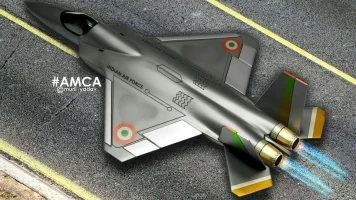India's aerospace industry is set to reach new heights with the upcoming first flight of the Tejas MkII, a cutting-edge fighter aircraft developed entirely within the nation.
Scheduled for the end of 2025, this technologically advanced 17.5-ton aircraft promises to strengthen India's defense capabilities significantly.
Ambitions and Production Goals
The Tejas MkII program underscores India's determination to become a leader in defense technology. The Indian Air Force (IAF) initially planned for 108 Tejas MkII fighters.
Now, recent reports indicate this number could double to 200 aircraft, demonstrating strong confidence in the program's potential. Production of the Tejas MkII is expected to begin in the early 2030s.
Progress and Timeline
Hindustan Aeronautics Limited (HAL) has made significant strides in the development of the Tejas MkII. The wing assembly has been completed, and the jet's assembly is scheduled to start later in 2024. This progress puts the aircraft on track for its highly anticipated inaugural flight by late 2025 or early 2026.
Evolving India's Air Force
Once its development is complete, the Tejas MkII will replace the aging MiG-29UPG and Mirage-2000 fighters currently used by the Indian Air Force. This modernization, starting around 2030, will ensure India's continued air superiority, equipped with a fleet of domestically produced, state-of-the-art fighter aircraft.
Key Upgrade: Increased Payload
The Tejas MkII stands apart from its predecessors with its increased size and weight. This allows for a heavier payload capacity, meaning the fighter jet can carry a more powerful and diverse array of weapons and equipment, making it a potent force on the battlefield.
Looking Ahead
The Tejas MkII project signals India's continued commitment to bolstering its indigenous defense manufacturing capabilities. The aircraft's success will enhance India's strategic independence and position the country as a major player in the global aerospace industry.


